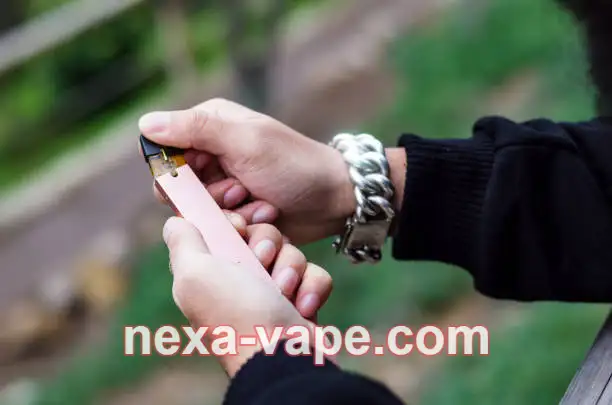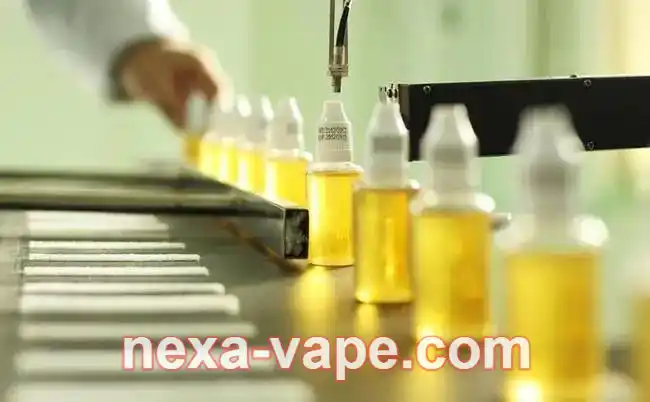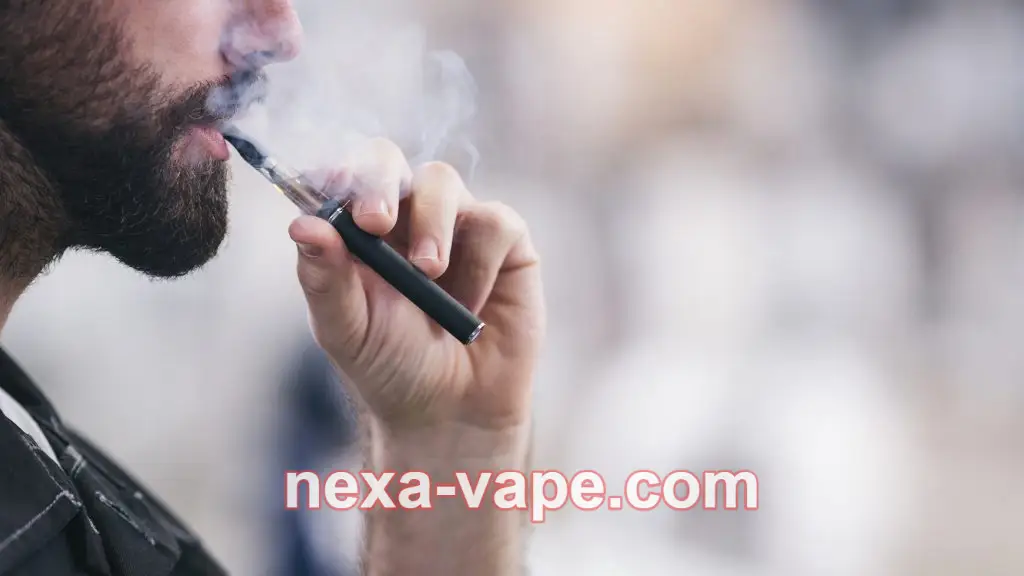Vape Industry Faces Massive Shake-Up: A $100 Billion Market in Flux, and Even BYD Wants a Piece of the Action
Starting October 1, new regulations governing vapes will take effect, heralding a new era of regulation and standardization in the industry. The guidelines, which are set to reshape the landscape of the vaping sector, have left many wondering: Is this the beginning of the end for vapes, or the dawn of a new, redefined market?
Let’s break down what the new rules are about and how they’re set to impact the vape industry, and the opportunities that might emerge for savvy companies, including major players like Nexa, which has been making waves in the disposable vape game.
The Vape Revolution: From Trend to Regulation
Vaping has been riding high for years, thanks to its promise of providing nicotine without the harmful side effects of traditional cigarettes. Unlike smoking, which involves the combustion of tobacco—releasing carcinogens like tar and carbon monoxide—vaping uses an electronic device to heat a liquid (called e-juice) to produce a vapor that users inhale. The goal? To offer a “safer” alternative to smoking, although studies still raise questions about the long-term health effects.
Initially, vaping’s appeal was undeniable: stylish designs, a sense of rebellion, and flavors like mint, mango, and watermelon that made it feel more like a cool hobby than a harmful habit. The market boomed, and by 2019, the domestic vape sector had already seen more than 50 rounds of funding, with a whopping $13 billion invested in the industry. Everyone wanted in.
However, as the industry expanded, it became clear that something needed to be done to prevent abuse, especially among teenagers. That’s where the new rules come into play.
What’s Changing?
In a nutshell, the new vape regulations are tightening up the production and sales of vapes, pushing manufacturers to follow strict guidelines on everything from vape device designs to flavoring. But the biggest shift revolves around the stricter rules surrounding e-juice ingredients and the banning of certain vape flavors.
Here are the three key changes that will affect both producers and consumers:
-
No More Nicotine-Free Vapes: If a device produces vapor without nicotine, it will no longer be allowed on the market. This is a major shift aimed at preventing the use of vapes by individuals who are not seeking to quit smoking, especially teenagers. While nicotine-free devices were once marketed as a less harmful alternative, the new rules want to make sure that only nicotine products are available in this space.
-
Goodbye to Fun Flavors: One of the biggest draws of vaping has been its wide array of flavors, from strawberry cheesecake to bubblegum. However, the new regulations are putting a stop to that. Now, only tobacco and menthol flavors will be allowed in vapes. The goal is to reduce the appeal of vaping to younger users who may be more likely to experiment with fruity, candy, or dessert flavors.
-
New Standards for Additives: The new guidelines also introduce a list of approved additives for e-juices, known as the “white list.” This will ensure that only safe, tested ingredients are used in the production of vape liquids. Manufacturers will need to be transparent about the ingredients in their products, which will help cut down on harmful substances slipping into the market.
The Immediate Impact: A New Era of Competition
With these regulations in place, the vape industry is set to experience a massive shake-up. On the one hand, many small vape shops and producers may struggle to comply with the new standards. Thousands of shops could be forced to close as licenses become harder to obtain. The cost of compliance, along with the inability to sell non-compliant products, means that many companies might be left on the outside looking in.
But on the other hand, the new regulations present a significant opportunity for well-established brands that are ready to adapt. Companies that already have the infrastructure and the resources to comply with these rules are likely to emerge stronger than ever, particularly those that have the right flavors and products to appeal to the new, regulated market.
Take Nexa, for example. This brand has been carving out a niche for itself in the disposable vape sector with its sleek, convenient designs and a wide range of mouth-watering flavors. The Nexa Pro Disposable Vape is a top pick for many vape enthusiasts looking for a high-quality, easy-to-use device that delivers a smooth hit every time. Plus, with flavors like blue raspberry and tropical punch, Nexa is likely to remain a top contender as consumers seek out the best flavors in this new regulated market.
Will the Giants Take Over?
It’s not just the small brands that are preparing for the changes—big names in the business are also gearing up to grab their share of the pie. For instance, BYD, a global powerhouse in electric vehicles, has recently filed for a license to enter the vape industry. This move has made headlines, as it signals that even non-traditional players are eyeing the multi-billion dollar opportunity in the vape sector.
It’s not just BYD. Many major players from other industries are seeing the growing market potential and are planning to diversify into vapes. Global giants like British American Tobacco (BAT) and Imperial Brands are already reaping the rewards of the booming e-cigarette market, with BAT recently reporting a 45% increase in its vape product revenue. As these companies shift more focus onto vaping products, the market could see a rise in even more competition and innovation.
With these shifts in mind, smaller brands may find it difficult to keep up with the giants that have the resources and global distribution channels to dominate the market. But this doesn’t mean there’s no room for nimble, adaptable brands. Brands like Nexa, which are already pushing the boundaries with cutting-edge disposable devices and flavors, could still find a place in the new landscape—especially if they focus on niche markets and cater to more discerning customers.
Opportunities in the Global Market
While the domestic market might feel the heat of new regulations, the global market presents a vast opportunity. Vape exports from several countries have been steadily increasing, with the export market expected to see a 35% growth in 2024 alone.
As local companies adjust to the domestic rules, many are setting their sights on overseas expansion. For example, several manufacturers are already eyeing markets in Europe, the US, and Southeast Asia, where regulations are still in flux, but demand for quality vapes continues to rise. Nexa could very well be one of the brands to tap into this potential, offering international consumers its line of disposable vapes and flavors that are designed to satisfy even the most discerning tastes.
Higher Taxes, Higher Costs: What’s Next?
One potential challenge for vape companies is the possibility of increased taxes on vape products. Currently, many places apply a 13% standard consumption tax on vape products, but this could rise to a 36% tax—closer to that of traditional cigarettes. This hike in taxes would likely raise the prices of vapes, especially in the disposable market. As a result, consumers could feel the pinch, and smaller companies might struggle to compete with larger firms who can absorb these additional costs.
This price increase might also shift the market away from niche brands and towards larger companies with the resources to manage these financial pressures. In the long run, it could even lead to a trend where state-owned enterprises dominate the industry, pushing out independent, private companies. That said, the tax hike could also have the unintended effect of making vaping less appealing to younger users, as the higher price point might serve as a barrier to entry.
The Future of Vaping: A New Normal?
With all these changes, the future of vaping is in the air. While it’s clear that the industry is entering a period of significant upheaval, it’s also evident that new opportunities will arise. Consumers can expect a more regulated, streamlined market, with fewer options when it comes to flavors and devices, but hopefully with products that are safer and more consistent.
For brands like Nexa, which are already prepared with high-quality, flavor-rich options like the Nexa Pro Disposable Vape, the future still looks bright. As the market settles and regulations solidify, companies that focus on product quality, user experience, and compliance will likely thrive in this new era of vaping.
So, whether you’re a long-time vape enthusiast or a newcomer to the scene, it’s clear that vaping is entering a new phase. Stay tuned, because the best Nexa Vape Flavors and products are still yet to come.
